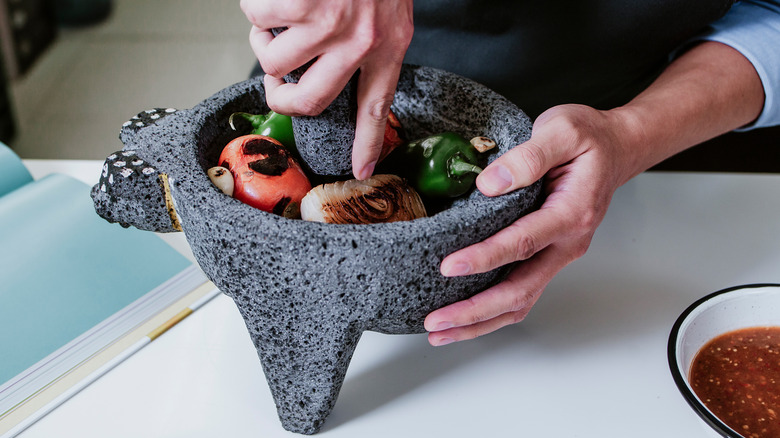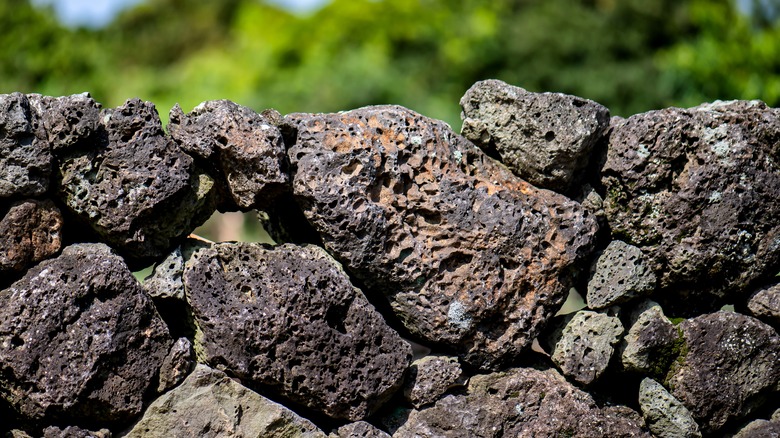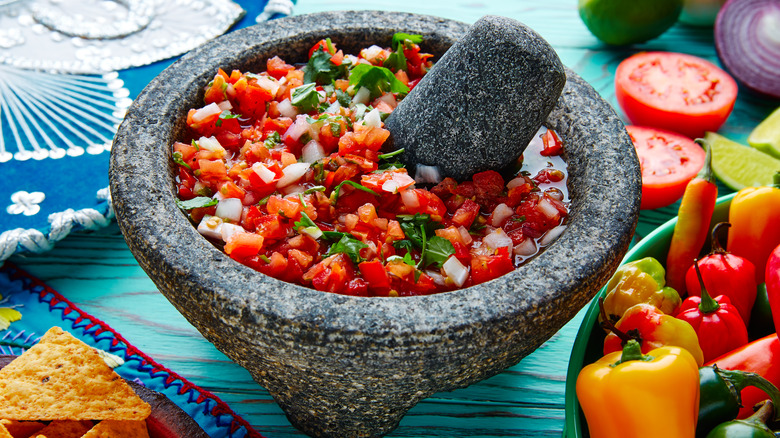Mortar And Pestle Vs. Molcajete: What's The Difference?
Modern chefs have plenty of gadgets that whirr, chop, liquefy, and prepare food for our consumption. But it was not always so. Before the Industrial Revolution brought us steam power in the 1700s, the tools chefs used to make their culinary delights were handmade. As such, they also prepared their food by hand until it came time to cook the meal.
Every ancient culture in the world had its own tools for food prep. Ovens for cooking food are at least 6,500 years old, according to Britain's Daily Mail. However, the tools used to grind flour into digestible snacks goes back even further, notes ABC Goldfields in Australia. Humans began using mortar-and-pestle tools as early as 30,000 years ago in Eastern Europe when Stone Age humans smashed grains using rocks and bowl-shaped rocky indentations on the ground. Eventually, humans fashioned these tools themselves. Pre-European cultures in Mexico developed a food prep tool similar to the mortar and pestle, only this was made out of very sturdy materials found in abundance in the region.
Molcajetes come from a single piece of volcanic rock
Mexican cuisine is as rich as the various regions that make up the country of 130 million people. Culinary traditions date back several thousand years, before the time of Spanish explorers when the Aztec and Maya people thrived in the region, says Mex Grocer. Instead of a mortar and pestle to grind chiles and corn, these cultures used the molcajete y tejolete. These implements look very similar to a mortar and pestle: They use a rounded stone, able to be held in human hands, to grind food against a stone slab or rounded bowl made of the same hard material as the handheld implement. The first formal mortar and pestle tools, carved from rocks instead of using rocks themselves, were used in Egypt to grind spices around 10,000 years ago, notes Cambridge Environmental Products.
There is one distinct difference that sets apart a molcajete y tejolote from a mortar and pestle. The implement used by Mayans and Aztecs is made from a single piece of volcanic rock. You'll find many molcajetes with three legs to support the bowl. However, ancient molcajetes don't necessarily have this tripod shape. Because they're made from volcanic rock, each molcajete y tejolote comes with special care instructions.
Handle with care
Authentic molcajetes are ideal for bringing out the flavors of chiles, spices, and other ingredients of salsa and guacamole, according to Atlas Obscura. You might find these staples of Mexican cuisine to have a more enriched flavor compared to modern food prep methods in a blender because the slower process and the smashing of ingredients tend to release more flavors, mixing together gradually.
Before you order an authentic molcajete, consider the amount of care you need to give it. These traditional food prep tools, prized and passed down through the generations in Mexican families, have unique care instructions, according to Mex Grocer. First, remove all loose rocks or pebbles from the surface. Then soak the entire molcajete y tejolete in frigid water for eight hours while you sleep. Next, grind white rice into the surface over and over again until it comes up completely clean without any gray color. Now you'll know it's ready to use, and your salsa and guac won't have an earthy, basaltic tinge to them. The source also notes that you should avoid soap or dish detergent when rinsing it out.


